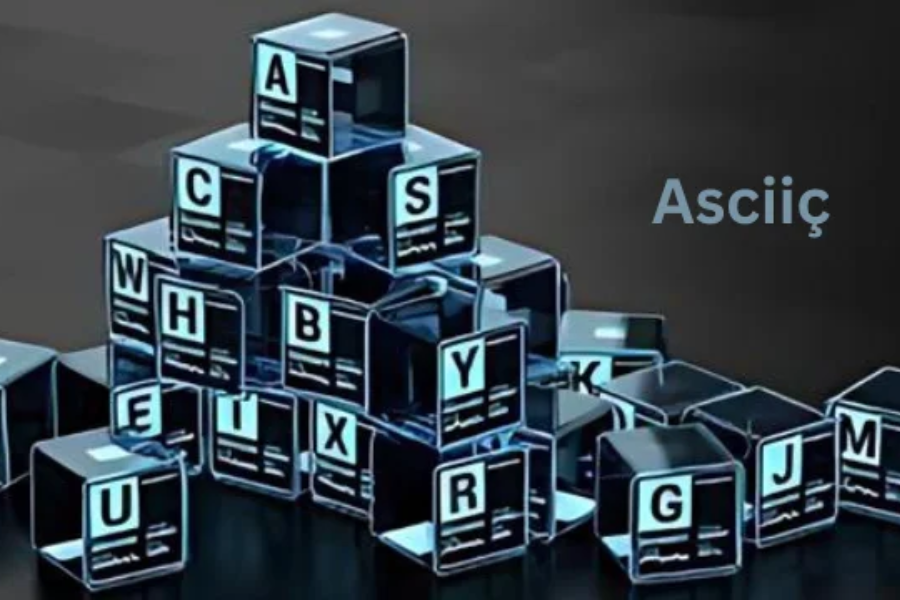Introduction
Character encoding forms the backbone of digital communication, ensuring that text is accurately interpreted and processed by computers. One of the earliest and most influential encoding schemes is ASCII (American Standard Code for Information Interchange). This post explores the history, structure, applications, and enduring relevance of ASCII in modern computing.
What is ASCII?
ASCII stands for American Standard Code for Information Interchange. It’s a character encoding standard that represents text in electronic devices, facilitating the encoding of symbolic information. ASCII maps each alphanumeric character to a specific code, making it fundamental to text representation in computers.
The History of ASCII
Developed in the early 1960s by the American National Standards Institute (ANSI), ASCII aimed to standardize text encoding across various platforms. By unifying incompatible representations and providing a consistent character set, ASCII enabled diverse systems to communicate seamlessly. It quickly became the go-to standard for text representation, fostering interoperability between different systems.
Structure and Design of ASCII
ASCII uses a 7-bit binary code, allowing it to represent up to 128 unique characters. Each ASCII character is mapped to a specific number, which corresponds to its binary code. This straightforward design was ideal for early computer systems with limited memory and processing power, providing a clear and efficient method for text encoding.
ASCII Character Set
The ASCII character set includes:
- Control Characters (0-31): Non-printable characters used for operations like line feeds and carriage returns.
- Printable Characters (32-126): Includes uppercase and lowercase letters, digits, punctuation marks, and space, crucial for text processing.
- Backspace (127): While rarely used in everyday text, it’s part of the ASCII set.
Applications of ASCII
ASCII remains widely used in various contexts:
- Text Files: Plain text files often use ASCII encoding, making them easily portable and compatible across different systems.
- Programming: Many programming languages, including C and Python, use ASCII to represent basic characters.
- Internet Protocols: ASCII encoding is used in text-based data transmission over the internet.
- Data Communication: ASCII ensures that text data is consistently understood and processed across different devices.
ASCII in Modern Computing
Despite the development of more complex encoding systems like Unicode, ASCII continues to be relevant. Its simplicity makes it fast and efficient, and many modern encoding standards, including Unicode, are designed to be backward-compatible with ASCII. This enduring presence highlights ASCII’s foundational role in computing.
Advantages of ASCII
- Simplicity: ASCII’s straightforward design makes it easy to implement and reduces hardware costs.
- Interoperability: Supported by virtually all systems and devices, ASCII ensures broad compatibility.
- Efficiency: Its compact representation minimizes memory usage and processing requirements.
Limitations of ASCII
- Limited Character Set: ASCII’s 7-bit encoding restricts it to 128 characters, which is insufficient for many languages.
- No Multilingual Support: ASCII primarily supports English characters, limiting its use for international communication.
Extended ASCII and Beyond
To address ASCII’s limitations, Extended ASCII was developed, expanding the character set to 256 values. This extension included additional characters and symbols for various languages. However, Extended ASCII still falls short compared to Unicode, which offers a comprehensive solution for global text representation.
Unicode: The Next Generation
Unicode was designed to handle the limitations of ASCII and Extended ASCII by providing a character encoding standard that covers most writing systems. With over a million unique characters and variable-length encoding formats like UTF-8, Unicode has become the standard for modern computing. Despite this, ASCII remains a critical component of its foundation.
ASCII Art: Creativity in Characters
ASCII art is a creative technique that uses characters, symbols, and patterns to create images. This form of art was particularly popular in the early days of computing and continues to be appreciated for its simplicity and charm.
ASCII in Network Protocols
Many network protocols use ASCII for text data representation. For example, HTTP headers, email headers, and URL encoding rely on ASCII characters to ensure compatibility and readability across different systems.
Common ASCII Codes and Their Uses
- 32 (Space): Space character
- 33 (!): Exclamation mark
- 65-90 (A-Z): Uppercase letters
- 97-122 (a-z): Lowercase letters
- 48-57 (0-9): Digits
- 13 (CR): Carriage Return
- 10 (LF): Line Feed
The Future of Character Encoding
While Unicode is the predominant encoding standard today, ASCII continues to influence modern computing. Its principles laid the groundwork for future developments in text encoding. As technology advances, ASCII will remain an essential part of how we transmit and represent text.
FAQs:
1. What is ASCII?
ASCII stands for American Standard Code for Information Interchange. It is a character encoding standard that represents text in electronic devices, using a 7-bit binary code to encode characters into numbers.
2. Why was ASCII developed?
ASCII was developed to standardize text encoding across different systems and devices. Before its creation, various systems used incompatible text representations, making it difficult for them to communicate with one another. ASCII unified these representations to ensure interoperability.
3. How many characters can ASCII represent?
ASCII can represent 128 unique characters, including control characters, uppercase and lowercase letters, digits, punctuation marks, and space.
4. What are control characters in ASCII?
Control characters are non-printable characters used for various text-processing functions, such as line feeds, carriage returns, and tabulations. They are crucial for managing text formatting and transmission.
5. What is Extended ASCII?
Extended ASCII is a version of ASCII that includes an additional 128 characters, expanding the character set to 256. This extension includes more symbols and characters to support various languages and special characters.
6. How does ASCII differ from Unicode?
ASCII is limited to 128 characters (or 256 in Extended ASCII), while Unicode supports over a million characters from most of the world’s writing systems. Unicode is more versatile and suitable for global communication, whereas ASCII remains a foundational component.
7. Is ASCII still used today?
Yes, ASCII is still widely used today, especially in programming, text file representations, and data communication. It remains relevant due to its simplicity and compatibility with modern encoding standards like Unicode.
8. What is ASCII art?
ASCII art is a technique that uses characters, symbols, and patterns to create visual representations or images. It was popular in early computing and continues to be appreciated for its creativity and simplicity.
Conclusion
ASCII has played a pivotal role in the development of digital communication and text encoding. Its simplicity and efficiency laid the groundwork for modern computing standards, ensuring that text could be consistently and accurately represented across different systems. Despite the advent of more advanced encoding systems like Unicode, ASCII’s legacy endures due to its foundational principles and widespread compatibility.
From its origins in the 1960s to its continued relevance in contemporary technology, ASCII remains a testament to the importance of standardized encoding in enabling seamless communication. As technology evolves, ASCII’s influence on character encoding and its role in various applications will continue to be recognized and appreciated.





